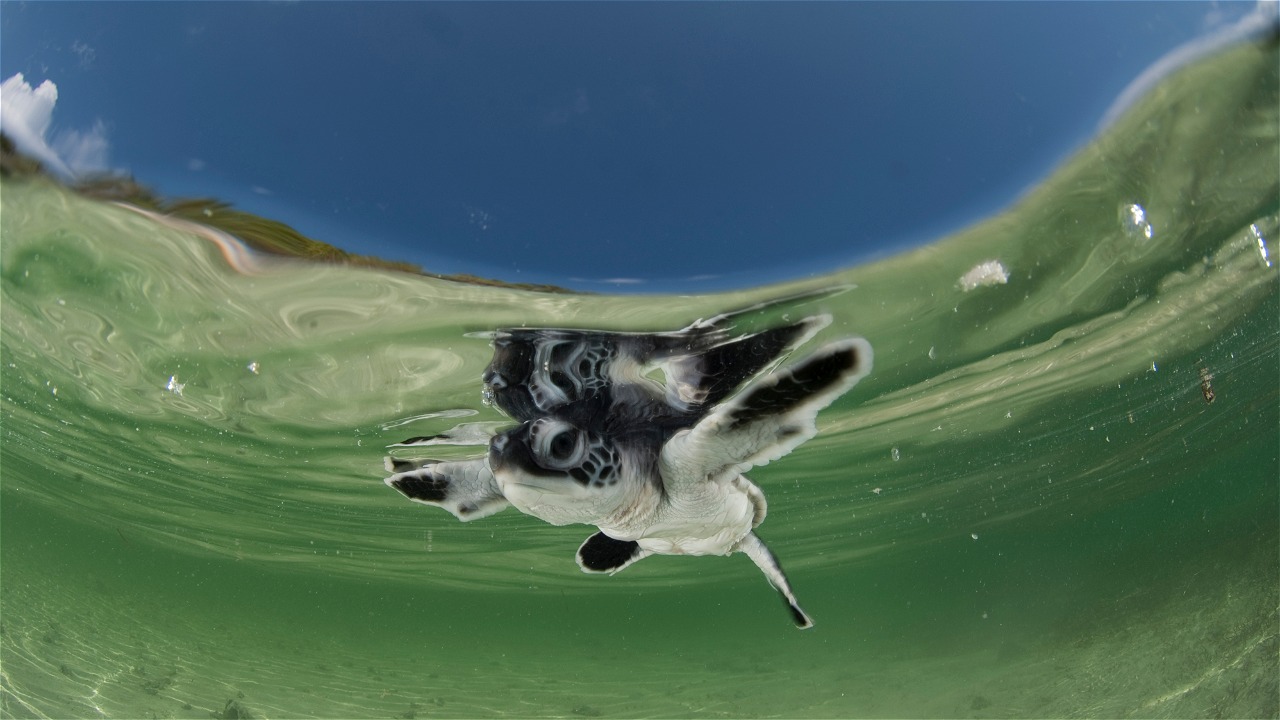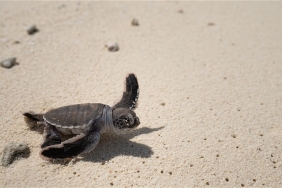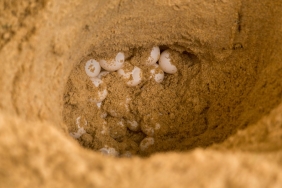ACCIDENTALLY CAUGHT, SEA TURTLES MUST RECEIVE PROPER TREATMENT
By Wahyu Teguh Prawira
Turtles are one of the charismatic animals from the dinosaur era whose population is now increasingly threatened. Its number is decreasing, one of which is due to accidental capture during fishing activities, especially in net and longline fishing gear. Based on the results of WWF-Indonesia's 2013 survey in 8 locations, namely Dobo, Banyuwangi, Cilacap, Puger, Bangka, Padang, Takalar, and Bintan, there are an average of 1-7 sea turtles per boat each year, or around 11,700 sea turtles caught accidentally in gill nets. As for fishing gear, 285 sea turtles were caught from 1473 times of baiting on 31 vessels in 3 major ports (Muara Baru, Benoa, Bitung). This condition is exacerbated by the fact that most fishermen using these 2 fishing gears in several locations do not understand how to handle turtles that are caught accidentally. This has resulted in an increasing mortality rate of sea turtles due to bycatch.
As one of the efforts to disseminate information on responsible fisheries practices, WWF-Indonesia in mid-August held a training on the mitigation and handling of sea turtle bycatch in net fishing gear. This activity was held in 3 locations that are considered to have high potential for sea turtle bycatch, namely in Takalar (South Sulawesi), Dobo in the Southeast Aru Islands, and the Kei Kecil Islands (Maluku). A total of 174 participants consisting of a number of relevant stakeholders, including Takalar Regency Fisheries Extension Officers, fishermen with net gear, boat owners, and several fisheries and marine student associations, were given material on the principles of sustainable fisheries practices consisting of 5 aspects, namely maintaining fish stocks, protecting threatened marine biota, selective fishing, maintaining ecosystems, and traceability. The participants were also taught how to handle sea turtles caught in an unconscious condition, how to resuscitate them, how to release them back to the sea, and mitigation techniques so that they do not become bycatch in fishing activities.
During the activity, many things were conveyed by the participants related to sea turtles that are often caught accidentally in fishing activities. "So far, we have always just released turtles caught accidentally without taking any action, because we did not know that there was a technique to handle these animals before being released back to the sea," said one of the fishermen who participated in the training. Several other participants also said that so far no relevant parties have provided material on mitigation efforts and how to handle animals categorized as threatened, endangered and protected. Even in some training locations, a number of fishermen admitted that they did not know what marine animals were protected, or which were included in the ETP (endangered, threatened, and protected) category..
This activity is expected to increase the understanding and ability of net fishermen, especially in providing handling and mitigation techniques when getting sea turtles as side catches. By doing so, it can slowly increase the survival rate of ETP animals, especially sea turtles.




